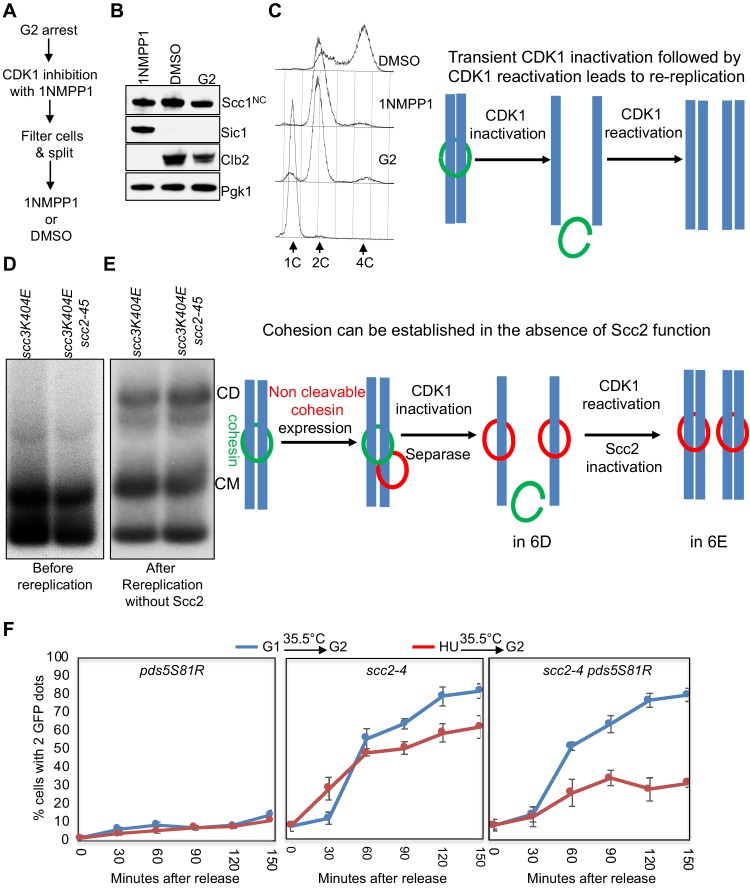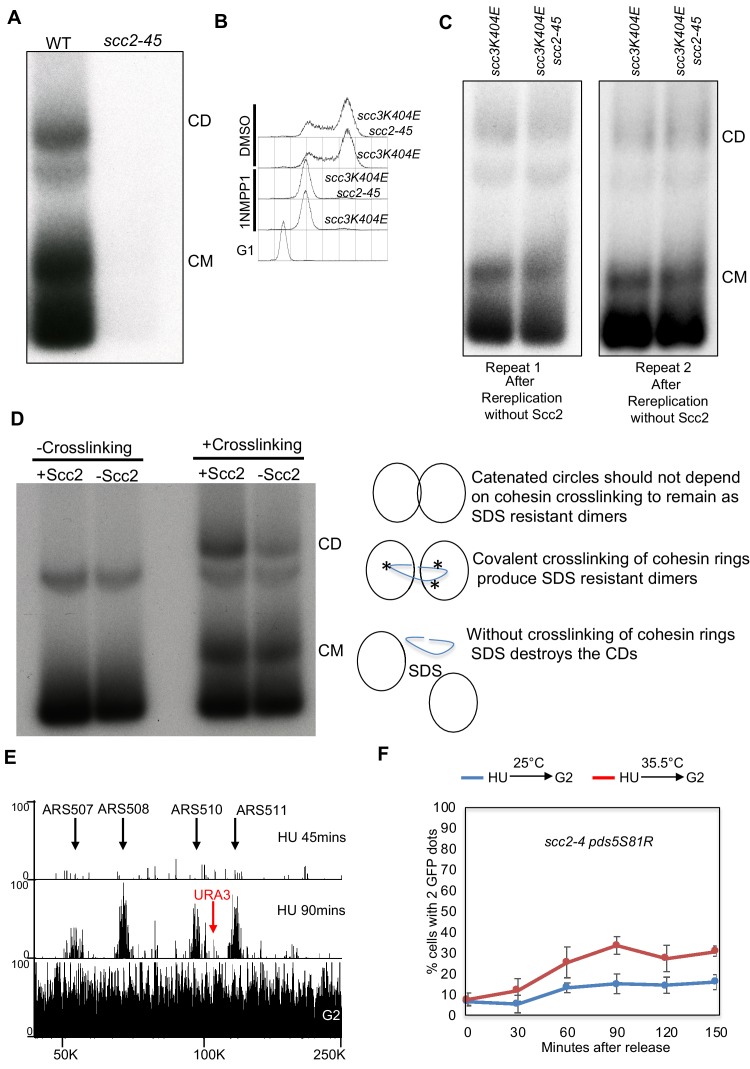Figure 7. In the absence of all forms of cohesin release, Scc2 becomes dispensable for cohesion establishment.
(A–C) Transient inhibition of CDK1 in mitotic cells induces re-replication: (A) Growth conditions to induce re-replication: scc3K404E cdc28-as1 (K25437) containing 2C Smc1 and 2C Smc3 along with galactose inducible 2C Scc1NC was arrested in G2 with nocadazole. Scc1NC expression induced by galactose addition for 60 min. After this, glucose and 1NMPP1 were added to the cultures. After 60 min, the culture was shifted to 37°C for 20 min. Subsequently, the culture was filtered, washed with YEP medium and resuspended into YEPD medium containing either DMSO or 1NMPP1at 37°C. 90 min later, the culture was analysed by western blotting with indicated antibodies (B) and FACS (C). (D and E) in the absence of release, Scc2 is dispensable for cohesion establishment: re-replication was induced in scc3K404E cdc28-as1 (K25437) and scc3K404E scc2-45 cdc28-as1 (K25440) expressing galactose inducible 6C non-cleavable cohesin using the growth regime described in (A). Samples drawn before (D) and after (E) induction of re-replication were analysed by in vivo crosslinking and minichromosome IP. (F) Inactivation of releasing activity suppresses the cohesion defect caused by Scc2 inactivation: Sister chromatid cohesion was measured as described in Materials and Methods in pds5S81R (K27443) scc2-4 (K15028) and scc2-4 pds5S81R (K27575) strains that were arrested in G1 or S (HU) and released into G2 arrest (by Cdc20 depletion) at non-permissive temperature (35.5°C).


